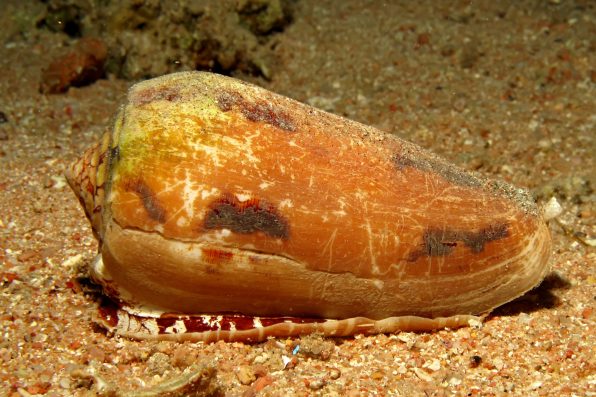A new study has suggested that the venom of a sea snail could be used for drugs to treat diseases that affect hundreds of millions of people.
Researchers from the University of Utah identified a component within the venom that acts like somatostatin, a human hormone involved with the regulation of blood sugar and hormone levels.
The toxin, which is called consomatin, is from the geography cone snail. These creatures are a species of predatory sea snail known for hunting small fish. They are typically found in reefs in the tropical Indo-Pacific.
All cone snails use venom to hunt and kill prey, but the poison of the geography cone snail is strong enough to kill humans. It is the most venomous of the known cone snail species. Nearly all human fatalities from cone snails are linked to the geography cone.
However, its deadly venom has the potential to create effective drugs to treat various medical conditions. Consomatin is more stable and precise than the natural human hormone somatostatin, so there is a better chance it can be successfully developed into drugs.
“Human somatostatin binds to five different membrane receptors to elicit a myriad of physiological actions,” said Ho Yan Yeung, the lead author and postdoctoral researcher at the University of Utah. “However, the cone snail somatostatin-like toxin only binds to one of the five membrane receptors to produce its targeted effect.”
The cone snail uses consomatin to paralyze its prey. The toxin stops blood sugar levels from rising, which is fatal for fish. It is believed that the same property could help treat people with diabetes and hormonal disorders.
Currently, there are synthetic drugs to regulate hormone levels, but they often come with side effects. Consomatin could allow scientists to target that specific health issue with increased accuracy and fewer unintended consequences.
The research team has also discovered an additional venom component that behaves similarly to insulin, demonstrating that the cone snail’s venom is even more complex than previously thought.

Sign up for Chip Chick’s newsletter and get stories like this delivered to your inbox.


